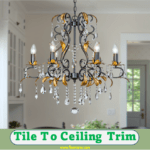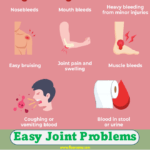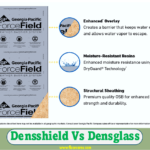Cement Board Stucco Problems: Cement board stucco problems include staining, cracking, moisture intrusion, and improper installation, which can lead to costly repairs or remediation. While it can be applied to PermaBASE CI™ Insulated Cement Board, issues such as moisture penetration, mold growth, rot, and structural damage are prevalent.
These problems are often attributed to inadequate installation, causing significant and expensive issues. Additionally, failures have been documented when synthetic stucco is applied over fiber cement panels, as it can result in moisture penetration and mold growth, leading to extensive damage and costly repairs.
Addressing these challenges is essential to ensuring the long-term durability and stability of stucco siding. Understanding the potential problems associated with cement board stucco is crucial for homeowners and contractors to effectively assess and address any issues.
Common Issues With Cement Board Stucco
Cement board stucco is a popular choice for homeowners due to its durability and aesthetic appeal. However, like any building material, it is not immune to problems. This section will discuss the common issues that can arise with cement board stucco and the potential solutions. Let’s explore the most prevalent problems: staining and discoloration, cracking, and moisture intrusion.
Staining And Discoloration
Staining and discoloration are homeowners’ most common issues with cement board stucco. Over time, the stucco can become prone to discoloration due to factors such as dirt, pollution, and water exposure. This can lead to an unsightly appearance and a decrease in curb appeal.
Regular cleaning and maintenance are essential to address staining and discoloration. Pressure washing, using a mild detergent, can help remove dirt and grime. Additionally, applying a protective coating or paint can help prevent future staining and maintain the stucco’s color.
Cracking
Cracking is another frequent issue encountered with cement board stucco. Various factors, including temperature fluctuations, settlement of the building, or improper installation, can cause these cracks. Cracks compromise the integrity of the stucco and allow moisture to seep in, potentially leading to further damage.
To address cracking, it is crucial to identify the underlying cause and address it accordingly. For instance, addressing the foundation issue may be necessary if the cracks result from settlement. Additionally, sealing the cracks with an appropriate filler and applying a waterproofing membrane can help prevent further cracking and moisture intrusion.
Moisture Intrusion
Moisture intrusion is a significant concern with cement board stucco. If the stucco is not properly installed or maintained, water can penetrate the surface, leading to mold growth, rot, and structural damage. Moisture intrusion can occur through gaps, cracks, or improperly sealed areas.
To prevent moisture intrusion, it is crucial to ensure proper installation and maintenance of the stucco. This includes regular inspections, sealing gaps or cracks, and applying a waterproofing barrier. Additionally, it is essential to address any underlying issues, such as inadequate drainage or improper flashing installation.

Comparison: Stucco Vs. Fiber Cement Siding
When comparing stucco and fiber cement siding, weighing their respective advantages and downsides is important. Both options have unique characteristics that could significantly affect a property’s long-term durability and aesthetic appeal. Understanding the strengths and weaknesses of each material can help homeowners make informed decisions when choosing the most suitable siding for their homes.
Advantages Of Fiber Cement Siding
- Fiber cement siding offers exceptional durability and can withstand harsh weather conditions.
- It is resistant to rot, fire, and termites, making it a low-maintenance, long-lasting siding option.
- As a versatile material, fiber cement siding can be designed to mimic the appearance of wood, brick, or stucco, providing homeowners with various aesthetic choices.
- Fiber cement siding can last for decades with proper installation, reducing the need for frequent replacements.
Downsides Of Stucco Siding
- Stucco siding is prone to cracking and requires regular maintenance to prevent water intrusion, mold growth, and other potential issues.
- Improper stucco installation can lead to structural problems, including moisture-related defects and discoloration.
- Stucco may be more susceptible to impact damage and require more frequent repairs than fiber cement siding.
Reasons Behind Stucco Failures
Cement board stucco failures can be attributed to improper installation, leading to cracking, water damage, mold growth, and rotting. Common problems include staining and discoloration, moisture intrusion, and stucco extending below grade, necessitating repair or remediation. Additionally, failures have been documented with synthetic stucco over fiber cement panels, resulting in costly repairs.
Stucco is a popular choice for exterior cladding due to its aesthetic appeal. However, despite its beauty, stucco is not immune to developing underlying issues, like cracking, water damage, mold growth, and rotting. These costly problems usually develop due to improper installation.
Improper Installation
Improper installation is one of the primary reasons behind stucco failures. When stucco is not installed correctly, it can lead to many problems. Here are a few common issues that arise from improper installation:
- Cracking: When stucco is not applied with the right consistency and thickness, it is prone to cracking. These cracks look unsightly and can allow water to seep in, causing further damage.
- Water Damage: If the stucco is not properly sealed or there are gaps in the application, water can infiltrate the walls, leading to water damage, mold growth, and decay.
- Mold Growth: Improper installation can create conditions favorable for mold growth. When moisture gets trapped behind the stucco, it provides an ideal environment for mold to flourish, posing a health risk and requiring remediation.
To avoid these problems, hiring qualified professionals with experience in stucco installation is crucial. They will ensure the right materials and techniques are used, providing a durable and long-lasting finish.
Underlying Problems
In addition to improper installation, stucco failures can also be attributed to underlying problems within the structure. Here are some common underlying issues that can cause stucco problems:
- Poor Building Design: In some cases, the design of the building itself can contribute to stucco failures. For example, if there is insufficient clearance between the ground and the end of the stucco, moisture can accumulate, leading to water damage and decay.
- Inadequate Moisture Management: Stucco requires proper moisture management to prevent water infiltration and accumulation. If the building does not have sufficient drainage systems or if these systems are not maintained properly, moisture problems can arise.
- Structural Settlement: Buildings naturally settle over time, which can cause stress and movement in the stucco. If the stucco is not designed to accommodate these movements, it can lead to cracks and other issues.
To address these underlying problems, it is important to identify and rectify any issues before installing or repairing stucco. Consulting with a qualified professional can help ensure that the underlying problems are addressed effectively, reducing the risk of stucco failures in the future.

Troubleshooting Cement Board Stucco
Discover common Cement Board Stucco problems like staining, cracking, and moisture intrusion. Issues may stem from improper installation, causing costly repairs. Rescue your stucco with effective troubleshooting methods today.
Issues With Small Gaps
One of the common problems encountered with cement board stucco is the occurrence of small gaps during installation. When the gap between the ground and the end of the stucco is too small, moisture can seep in, leading to potential damage. Proper sealing and gap maintenance during installation are crucial to prevent this issue.
Cracking At Joints
Another prevalent issue observed with cement board stucco is cracking at the joints. Even with mesh embedded over the joints, cracking can occur, especially in small areas such as outdoor kitchens. Proper techniques and materials should be used to mitigate this problem, ensuring the longevity and durability of the stucco application.
Failures Associated With Synthetic Stucco Over Fiber Cement
Synthetic stucco over fiber cement has been linked to several problematic issues. Moisture penetration and structural damage are two common failures that can arise, compromising the integrity of the stucco application.
Moisture Penetration
Moisture penetration is a significant concern when synthetic stucco is applied over fiber cement panels. Improper installation or gaps in the application can lead to water infiltrating the structure, causing damage and fostering mold growth.
Structural Damage
Another consequence of using synthetic stucco over fiber cement is structural damage. The combination of these materials may not provide adequate structural support, leading to potentially hazardous situations such as cracking, rotting, and weakening of the overall building integrity.
Common Problems In Stucco Siding
Cement Board Stucco can face issues like staining, cracking, and moisture intrusion; remediation or repairs might be necessary. Improper installation can lead to stucco problems like cracking, water damage, mold growth, and rotting. Synthetic stucco over fiber cement panels can result in failures documented due to moisture penetration and structural damage.
Crumbling
Crumbling is common in stucco siding, where the material breaks down and deteriorates.
Soft Spots
Soft spots can develop in stucco siding, indicating possible water damage and compromising the structural integrity.
Insect Infestations
Insect infestations can wreak havoc on stucco siding, leading to unsightly damage and potential structural issues.
Solutions For Cement Board Stucco Problems
Problems requiring repairs and remediation can arise with cement board stucco. However, preventive measures can help minimize the occurrence of these issues. In this section, we will explore both the solutions for repairing and remedying cement board stucco problems and the preventive measures that can be taken to avoid them in the future.
Repairs And Remediation
If you’re facing problems with your cement board stucco, it’s important to address them promptly to prevent further damage. Here are some solutions for repairing and remediating cement board stucco problems:
- Identify the specific issue: Before proceeding with any repairs, it’s crucial to identify the exact problem with your cement board stucco. Common issues include staining and discoloration, cracking, moisture intrusion, stucco extending below grade, and caulking problems.
- Contact a professional contractor: It’s recommended to seek the help of a professional contractor who specializes in stucco repairs. They have the expertise and experience to assess the problem accurately and provide the appropriate solutions.
- Repair cracks and apply a new finish: Cracks in the stucco should be repaired using appropriate materials and techniques. Once the repairs are complete, a new finish can be applied to restore the appearance of the stucco.
- Address moisture issues: If moisture is seeping into the cement board stucco, it’s essential to identify and address the source of the moisture. This may involve fixing leaks, improving drainage systems, or installing vapor barriers.
- Perform necessary remediation: In some cases, severe stucco problems may require more extensive remediation measures. This could involve removing and replacing damaged sections of the cement board stucco to ensure the building’s structural integrity.
Preventive Measures
Preventing cement board stucco problems is key to maintaining the longevity and appearance of your home or building. Here are some preventive measures you can take:
- Hire a qualified contractor: Ensure that you hire a reputable and qualified contractor who specializes in cement board stucco installations. Their expertise and attention to detail during installation can prevent future problems.
- Follow proper installation guidelines: When installing cement board stucco, it’s crucial to follow the manufacturer’s guidelines and recommendations. This includes ensuring the appropriate gap between the stucco and the ground to prevent moisture penetration.
- Regular inspections and maintenance: Regularly inspect your cement board stucco early to identify potential issues. Address any cracks, discoloration, or signs of moisture immediately to prevent further damage.
- Maintain proper drainage: Proper drainage systems around your home or building can help prevent water from seeping into the cement board stucco. Ensure that rain gutters, downspouts, and grading are functioning properly to divert water away from the stucco.
- Apply protective coatings: Consider applying protective coatings or sealants to your cement board stucco to enhance its resistance to moisture, cracking, and staining. Consult with a professional for the most suitable products for your specific circumstances.

Frequently Asked Questions For Cement Board Stucco Problems
Can I Put Stucco Directly On the Cement Board?
Yes, you can put stucco directly on the cement board. The boards act like drywall panels, and stucco is applied similarly.
What Is A Major Stucco Defect?
A major stucco defect can include staining, discoloration, cracking, moisture intrusion, stucco extending below grade, and caulking issues. These problems may require repair or remediation. Address any of these issues promptly to maintain the integrity of your stucco.
What Is Better, Stucco Or Fiber Cement Siding?
Fiber cement siding is better than stucco because it is more resistant to cracking and moisture intrusion. Stucco can develop issues such as staining, discoloration, and water damage. Proper installation is crucial to prevent problems with both siding options.
Why Does Stucco Fail?
Stucco can fail due to improper installation, cracking, water damage, mold growth, and rotting. These issues may arise from inadequate gaps during installation or other installation errors. Regular maintenance and timely repairs can mitigate these problems.
Can Cement Board Stucco Be Applied Directly To Permabase Ci™ Insulated Cement Board?
Cement board stucco can be applied directly to PermaBASE CI™ Insulated Cement Board. The installation process is similar to drywall.
What Are The Major Defects In Stucco?
The major defects in stucco include staining, discoloration, cracking, moisture intrusion, stucco extending below grade, and caulking issues. These may require repairs or remediation.
Conclusion
Cement board stucco can present various challenges, including cracking, moisture intrusion, and staining. Proper installation is crucial to avoid these issues, possibly leading to costly repairs. By understanding the potential problems and investing in quality materials and installation, homeowners in Austin, Texas, can ensure their stucco exteriors’ long-term durability and aesthetics.


